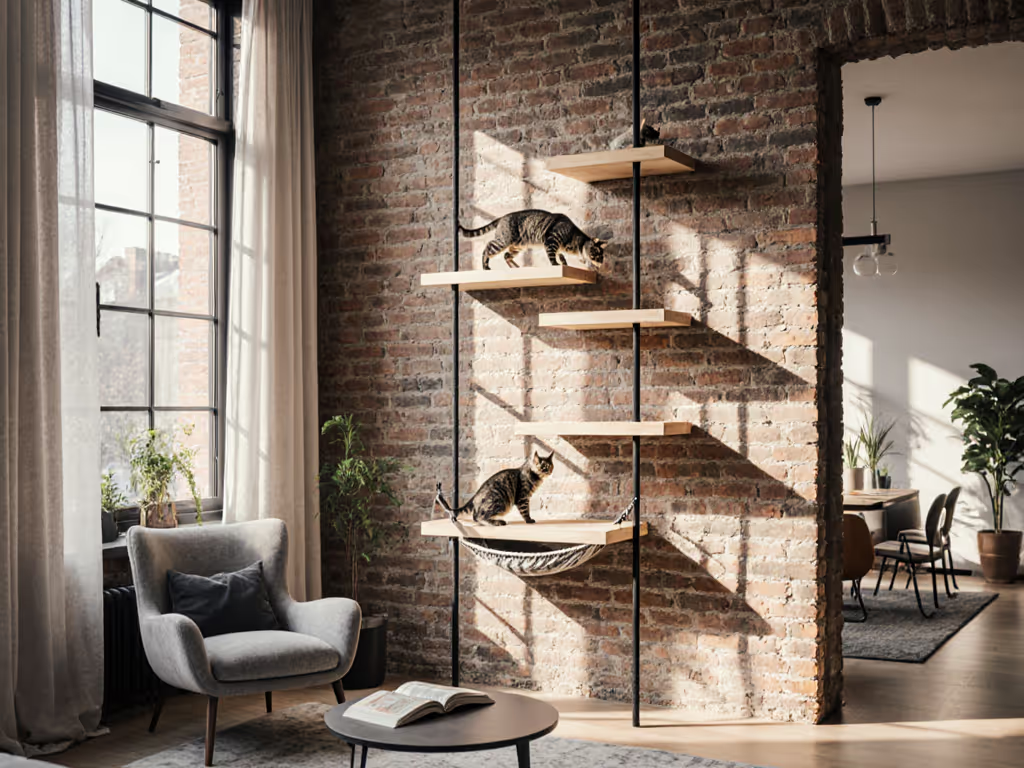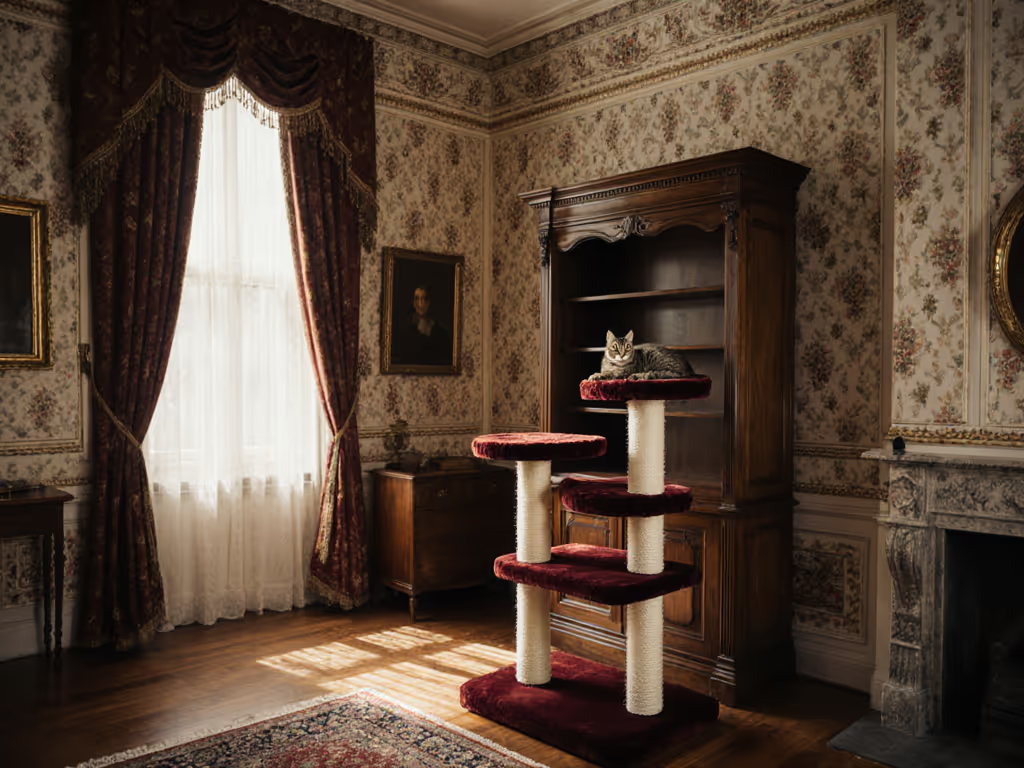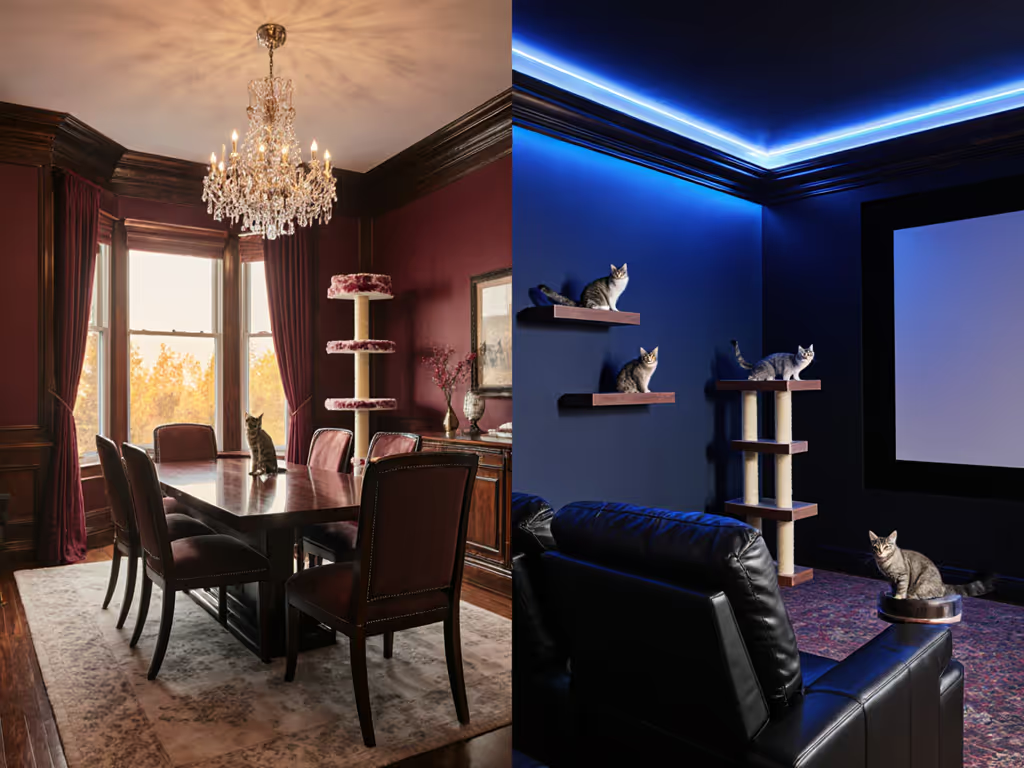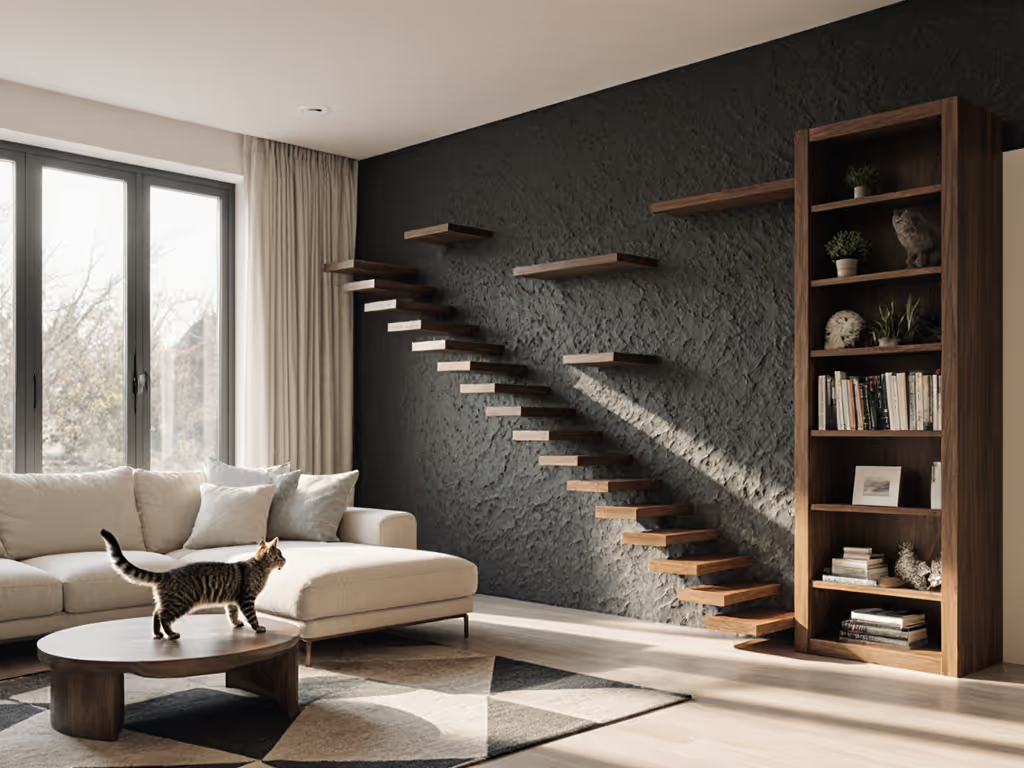
Preservation-Safe Unique Cat Furniture for Historic Homes

As a specialist in feline environmental enrichment, I've seen too many historic homeowners face the painful choice between preserving architectural integrity and giving their cats essential territory. The solution isn't compromise, it's creativity. When you understand that cats thrive when territory offers choice, vantage, and safe retreats, you can create unique cat furniture that respects both your home's heritage and your cat's instincts. Forget the notion that historic preservation and feline happiness are at odds; with thoughtful planning, they can beautifully coexist.
Why Historic Homes Pose Special Challenges for Cat Guardians
Historic homes come with preservation guidelines that often restrict wall modifications (a serious consideration when cats need vertical territory). Many homeowners feel trapped between preserving original woodwork and stopping their cats from scratching baseboards or climbing curtains. For the science behind why enrichment prevents damage, see our cat enrichment guide. The tension escalates when preservation boards deny permission for "permanent" cat structures, while cats express their frustration through redirected behaviors.
I remember working with a Victorian homeowner whose 1920s plaster walls couldn't accommodate traditional cat tree anchors. Her tabby, Miso, began treating the carved banister as a scratching post. Rather than condemn either the architecture or the cat, we designed a solution that honored both.
What Preservation Guidelines Really Mean for Your Cat's Territory
Most preservation regulations focus on reversibility and minimal impact. This aligns perfectly with feline needs when approached thoughtfully:
- Reversible installations shouldn't mean temporary or flimsy, cats need stable territory
- Non-invasive modifications actually create safer spaces for climbing cats
- Original material preservation protects both your investment and your cat from harmful materials
Understanding these principles helps transform restrictions into design opportunities rather than obstacles. Historic homes often feature built-in cabinetry, crown molding, and stair railings that can be incorporated into cat pathways with minimal intervention.
Principles of Preservation-Safe Feline Enrichment
Creating cat-friendly spaces in historic homes requires a gentle, precise approach that respects both architectural heritage and feline biology. The goal isn't to hide your cat furniture, but to integrate it so thoughtfully that it enhances rather than competes with your home's character.
The Vertical Advantage
Cats instinctively seek high vantage points (this isn't just preference but survival wiring). In historic homes with high ceilings and ornate moldings, vertical space is your greatest ally. Rather than anchoring towers into original walls, consider these sensory-focused approaches:
- Leverage existing built-ins: Install discreet shelves atop existing bookcases or cabinetry
- Use tension-based systems: Floor-to-ceiling poles that anchor only at base and ceiling
- Create "stepping stone" routes using antique stools or side tables
Smell is a room too (your cat experiences space through scent as much as sight). Preservation-safe solutions must consider both.
Reversible Installations That Feel Permanent to Cats
The key to successful historic preservation cat solutions is creating territory that feels secure to cats while meeting preservation standards. This requires understanding that cats need predictability (not necessarily permanent installations). For mounting choices that protect historic surfaces, see our drill-free vs drilled comparison.
Practical approaches include:
- Magnetic mounting systems for shelves that leave no marks
- Custom-fitted furniture that slots between existing architectural elements
- Weighted bases for floor units that won't damage original flooring
When designing these spaces, always consider the cat's perspective. A shelf that wobbles slightly may seem stable to you but creates anxiety for cats who rely on absolute stability when perched high.
Step-by-Step: Creating Your Historic Home Cat Environment
Step 1: Map Your Cat's Natural Pathways
Before installing anything, observe your cat's existing routes for 3-5 days. Note where they jump, where they pause, and where they face challenges. In historic homes, these patterns often follow architectural features (along stair railings, across fireplace mantels, or beside window seats).
Look for opportunities to enhance existing pathways rather than create new ones. This habit-aware approach respects both your home's layout and your cat's instincts.
Step 2: Create a Reversible Vertical Route
Using your pathway map, design a vertical route that connects key areas (sleeping, eating, viewing): If drilling into original walls is prohibited, try our tension-rod DIY system for stable, reversible vertical routes.
- Identify anchor points that won't compromise historic features (thick crown molding, sturdy doorframes)
- Install floating shelves at varying heights matching your cat's natural jump distance
- Connect with sisal-wrapped poles secured by tension mounts rather than screws
The Globlazer Big Cat Tower offers an excellent example of modular design that could be adapted for historic spaces with its reversible mounting system. While traditional cat trees might damage delicate surfaces, solutions designed with preservation in mind anchor securely without permanent alterations.

Globlazer Big Cat Tower
Step 3: Design Scent-Safe Zones
Smell is a room too (a principle often overlooked in historic renovations). Older homes may contain materials that cats find overwhelming or confusing. Create designated scent zones using:
- Natural fiber scratching posts placed away from sensitive historic materials
- Textile buffers between cats and irreplaceable surfaces
- Strategic placement of furniture to create natural scent barriers
This sensory-focused approach prevents cats from feeling compelled to mark territory in inappropriate places.
Step 4: Integrate with Historic Details
Rather than fighting your home's character, incorporate it into your cat's territory. A Federal-style home's symmetrical layout might suggest balanced perching spots, while a Victorian's nooks and crannies provide natural hideaways. For window-rich rooms, use safe sunbathing shelves that protect glass and trim.
Consider these approaches:
- Window seat conversions: Add cushioned perches to existing window seats
- Mantel extensions: Install reversible shelf extensions to fireplace mantels
- Crown molding routes: Create discreet pathways along existing molding
Beyond Preservation: Creating Harmony for Cats and Collectors
The most successful historic preservation cat solutions transform limitations into opportunities for creative enrichment. Remember that "cheap cat furniture" rarely serves either your preservation goals or your cat's needs (investing in quality, reversible pieces pays dividends in both conservation and feline wellbeing).
Evaluating Your Space for Dual Purpose
Look at your home through both your eyes and your cat's:
- Architectural features your cat already uses (stair railings, window sills)
- Historic elements that could double as cat territory (built-ins, alcoves)
- Preservation priorities that might conflict with natural cat behaviors
When these perspectives align, magic happens. I recently helped a client with a 1920s Craftsman home incorporate cat pathways into the existing built-in cabinetry, preserving the historic character while giving their two cats a dedicated territory that reduced inter-cat tension significantly.
Final Considerations for Preservation-Conscious Cat Owners
Creating unique cat furniture for historic homes isn't about finding off-the-shelf solutions, but designing spaces that honor both your home's story and your cat's instincts. Remember these key principles:
- Reversibility doesn't mean instability, cats need secure territory
- Preservation guidelines often align with creating safer cat environments
- Quality craftsmanship serves both architectural and feline needs
The most successful integrations disappear into the home's character while fully supporting your cat's natural behaviors. Your historic home isn't limiting your cat's territory (it's providing the canvas for a beautifully tailored environment that respects both history and biology).
Further Exploration
Every historic home presents unique opportunities for creating cat-friendly spaces that honor architectural heritage. Consider documenting your home's existing cat pathways and identifying one preservation-safe enhancement you could implement this month. Remember, behavior blossoms when spaces speak your cat's native language (your historic home has the potential to become the most enriching environment your cat could imagine).
For those interested in deeper exploration, preservation societies often have resources specifically for pet owners in historic districts. Many communities now recognize that historic homes thrive when their inhabitants (both human and feline) feel truly at home.



